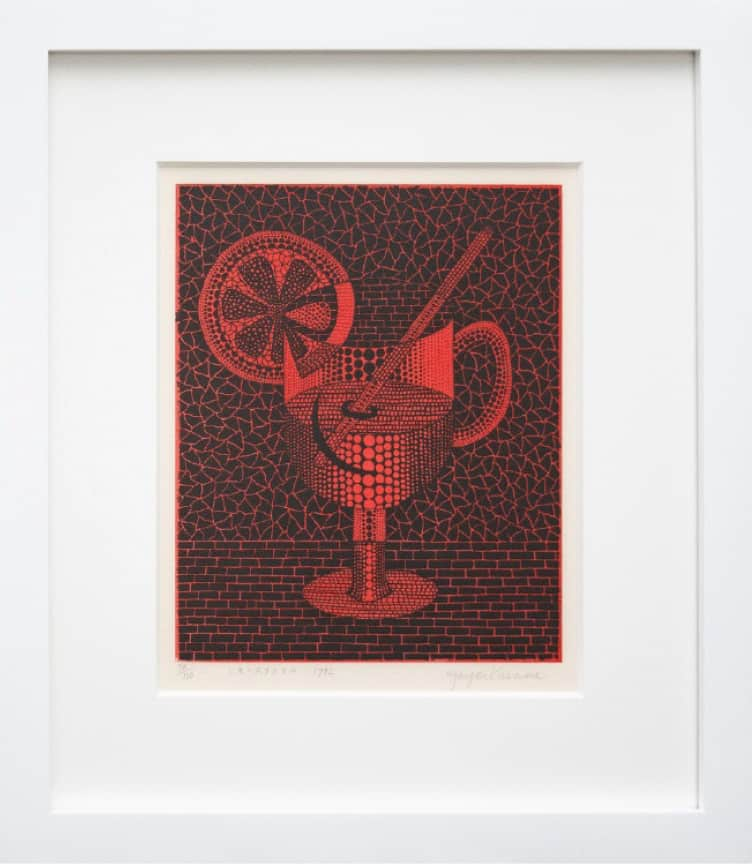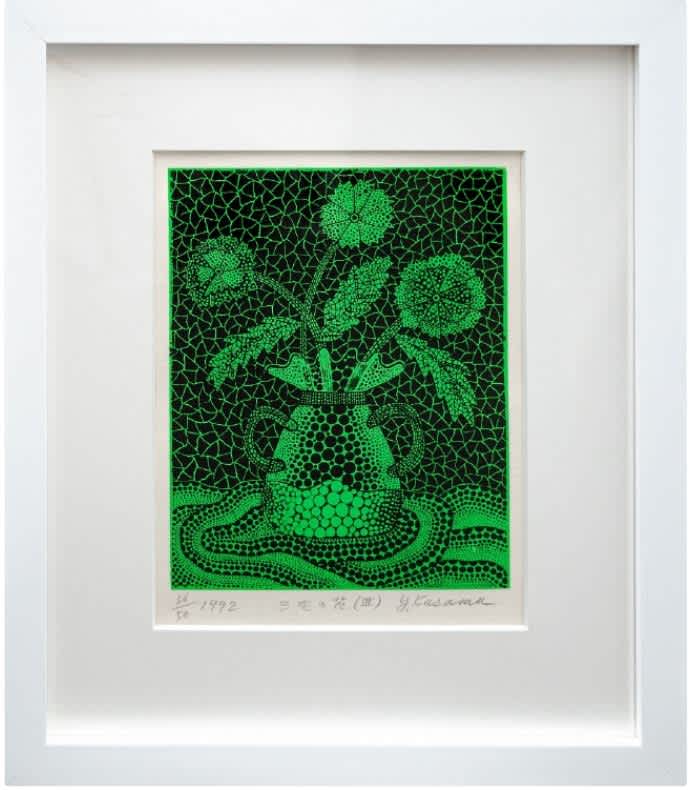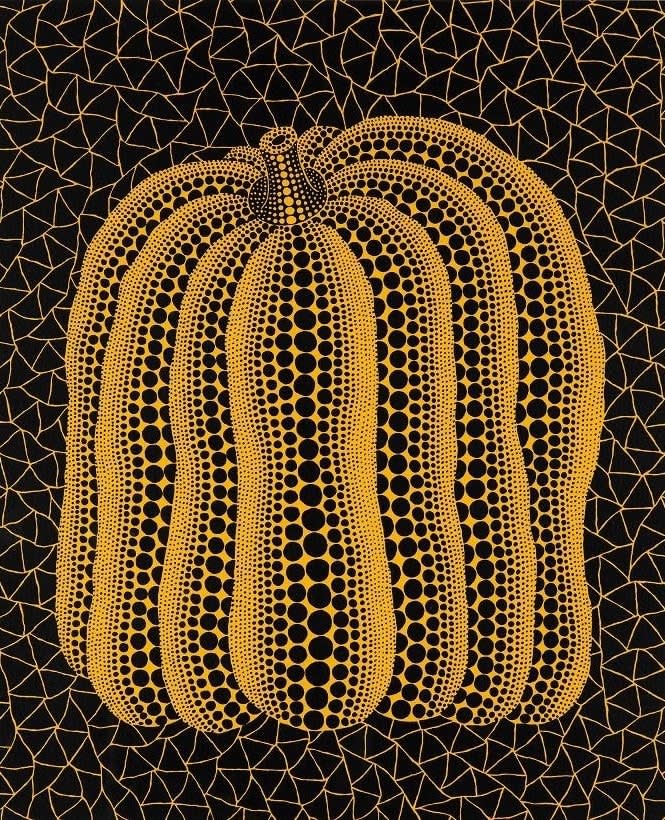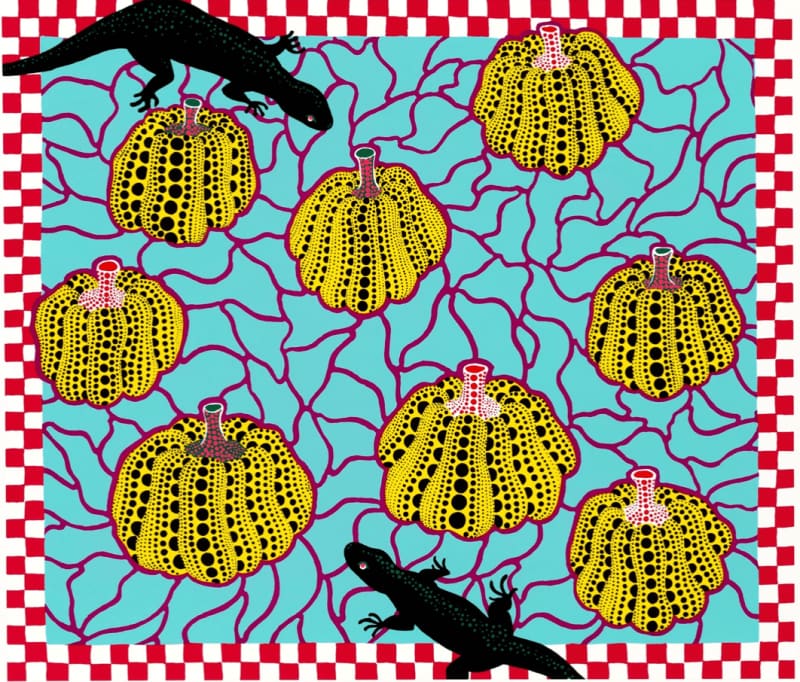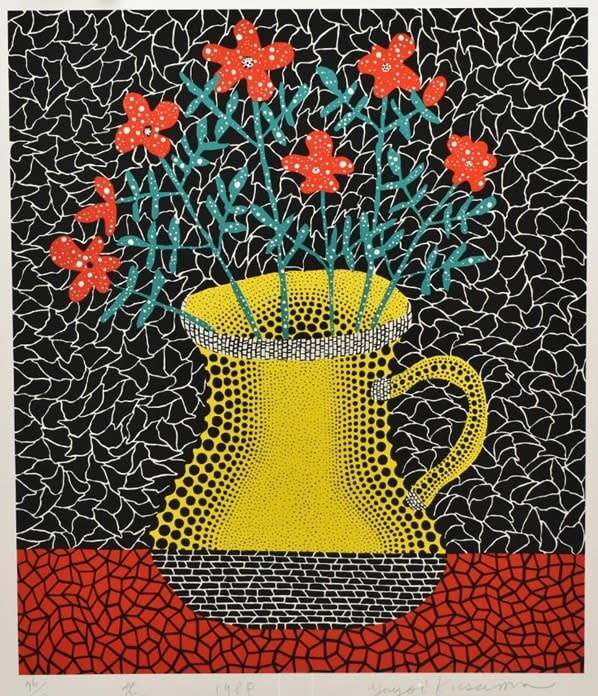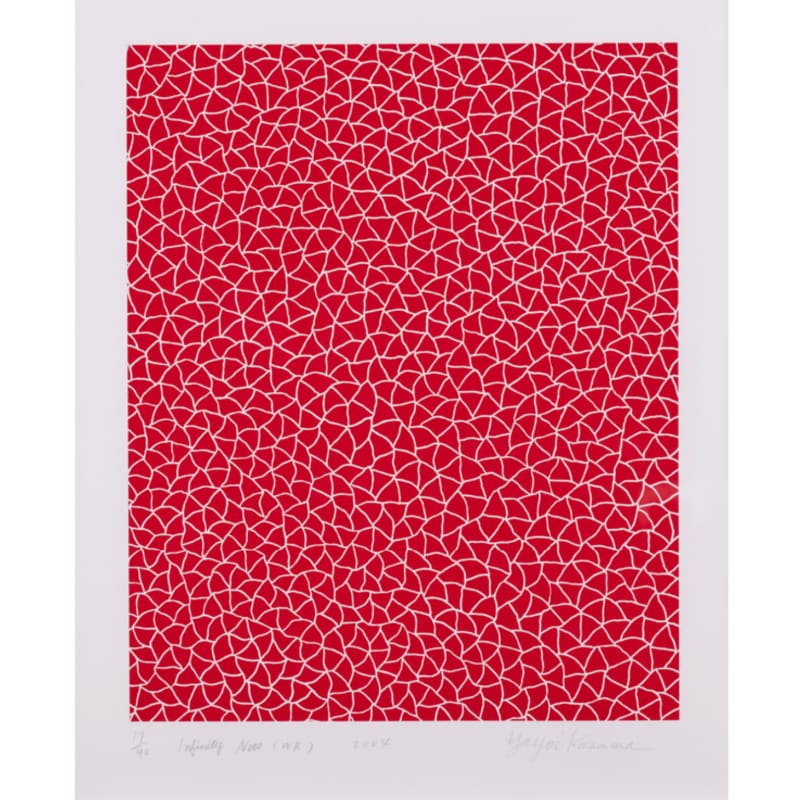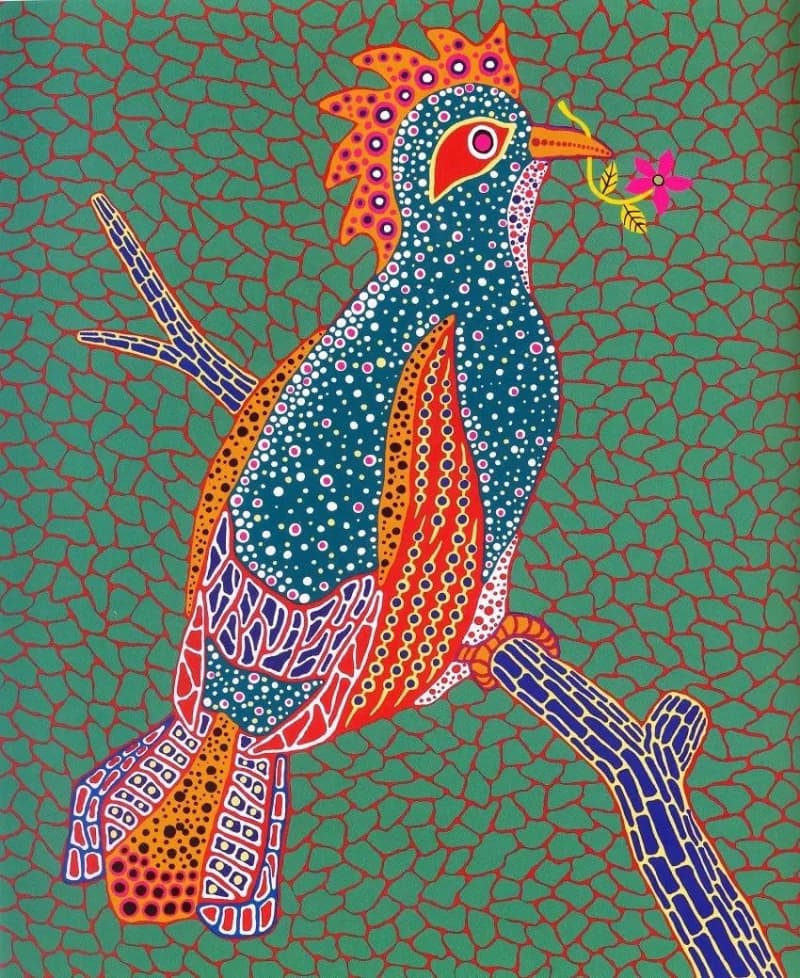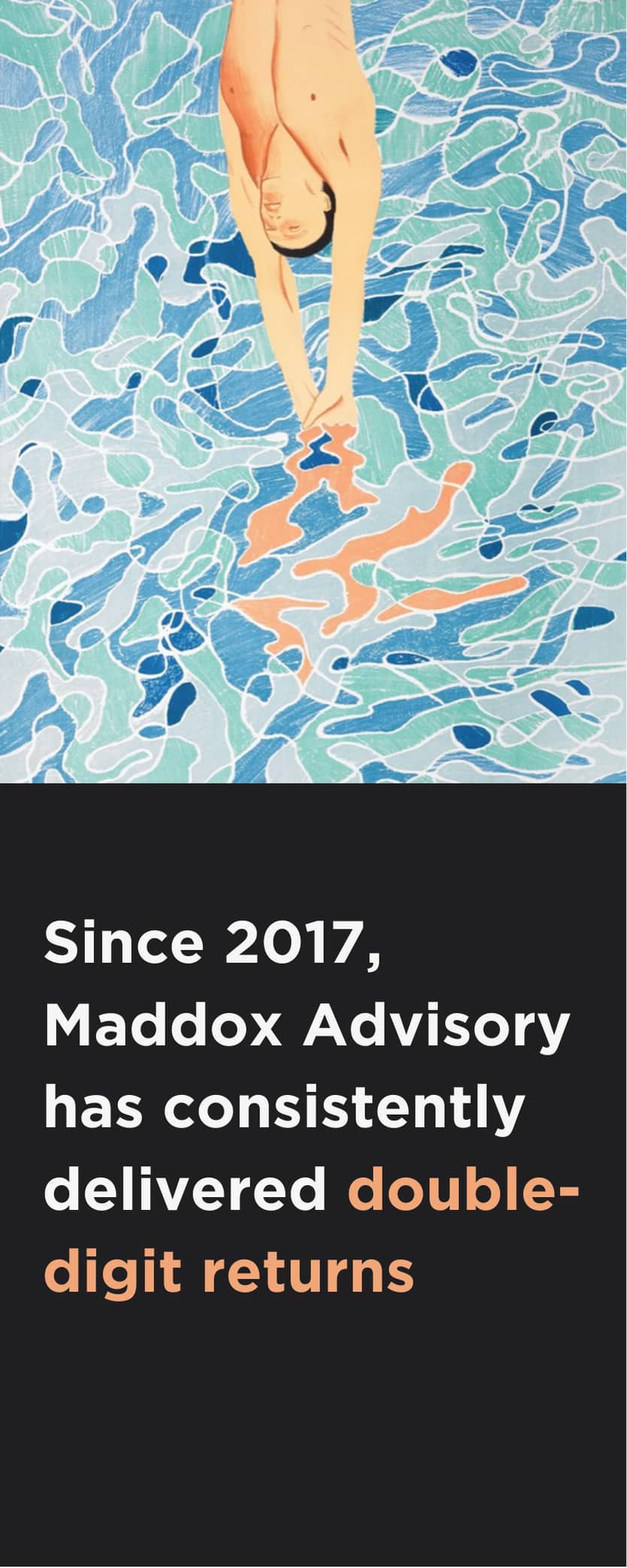We investigate the booming market of the prolific Japanese artist and consider why her prints are in such high demand.
When Yayoi Kusama was asked by a New York curator - “what kind of impact did she want for her work?” Kusama replied: “I wanted to start a revolution, using art to build the sort of society I myself envisioned”. Now 92, the verdict on Kusama is clear - both curators and the artist herself know her work has transformed beyond the polka dots and the infinity rooms of Instagram fame to become a revolution in its own right, resonating enduringly with audiences for over half a century. Contrary to popular belief, the best example of this creative dictum won’t be seen only in a pumpkin or a mirrored room, but additionally in works that take a subtle approach, such as her lithographs and prints. With their oblique references to time spent in psychiatric facilities, willing misunderstandings and radical feminism, Kusama’s prints are emerging as the savvy collector’s choice.

Image of Yayoi Kusama
Collecting Kusama prints makes a commitment to the core of Kusama’s work: identity, feminism and rebellion through art. Across the world, there’s been a cultural shift where Kusama’s followers are cottoning on to the fact that every key aspect of her most captivating messages can be found in prints, which offer a more subtle and refined lens than the pop art of her pumpkins and mirrors. The market for Kusama prints is booming, with young emerging collectors such as Antonia Marsh of the micro gallery Soft Opening, to Christie’s auction house turning their attentions to the Japanese artist’s lithographs as a new way to celebrate the artist.

In 2020, Christies saw sales of £32 million in their prints department, increasing dramatically from £19.2 million the year before. It’s not surprising that Kusama’s market are responding to this industry trend, as before she was even making money from her art, Kusama was nurturing a loyal global audience who have turned into a huge network of avid collectors. Inviting passersby in 1968 on the Brooklyn Bridge for her Anti-War Naked Happening & Flag Burning made her not just an urban myth, but an artist who has intentionally grown her market based off creative kudos.
The key in securing an agenda-setting Kusama print is to look for the radical elements of her work that she infuses into her lithographs. Motifs from her powerful early performances such as that on the Brooklyn Bridge and her first infinity mirror room in 1965, Infinity Mirror Room-Phalli’s Field, take on a second life in the blood red lithograph Lemon Squash (1992) with its polka dot motif, a throwback to that first infinity room. A pattern hardcore Kusama fans love is her shift from lightness to macabre, which Kusama’s lithograph’s master.
YAYOI KUSAMA, LEMON SQUASH, 1992
For a piece of art history, Kusama’s prints also signal how other contemporary artists were inspired by her work and how she accelerated contemporary art. On one overcast day in New York in 1964, Andy Warhol went to see one of Kusama’s first ever solo shows at Gertrude Stein Gallery, featuring a print where she had replicated a picture of a boat hundreds of times on a wall called Aggregation: One Thousand Boats Show. Ahead of the opening, Kusama had expressed to the gallery director that she was excited to be breaking new ground with prints, a less controversial route of artistic expression for her. Warhol had lavished praise on Kusama at the show, and a year later, had practiced the same multiple print format with farm cows in a show at Leo Castelli Gallery, causing Kusama to comment “Andy’s work focused very much on these multiple prints after that ― I was surprised that he had referenced my own work so directly”.
YAYOI KUSAMA, GOLDFISH BOWL,1984
For early-stage collectors looking to shape their body of work, a Kusama print is becoming a popular way to begin, with many buyers making the most of ‘phygital’ showrooms as the machinations for collecting change post-covid. Against her supersized works, there’s a comparatively small primary market for Kusama’s prints, but the range of different price points is making this into an increasingly competitive market. Storied collectors will no doubt be interested in maverick rare prints such as Three Flowers (1992), that show the shift in Kusama’s oeuvre, while young collectors will likely opt along the lines of oddball pieces like Lemon Squash (1992).
YAYOI KUSAMA, THREE FLOWERS (III), 1992
Collectors may find browsing the digital realm, whether on Instagram or online at gallery shows, fun but overwhelming. As Gordon Cooke, co-chair of the London Original Print Fair says, one of the most common questions they get is whether a print is an original. Their answer is always the same - yes, prints are a great way to own an original piece of art, even if the run is up to 150. As her followers know, Kusama is one of the most coveted artists in the world and with over 80 million tagged posts on Instagram according to auction house, Phillips, she remains one of the most relevant contemporary artists of today. Reaching her highest auction sale at £5 million in 2014 and with a market that continues to boom year on year, owning anything by Kusama is undoubtedly a smart move.

